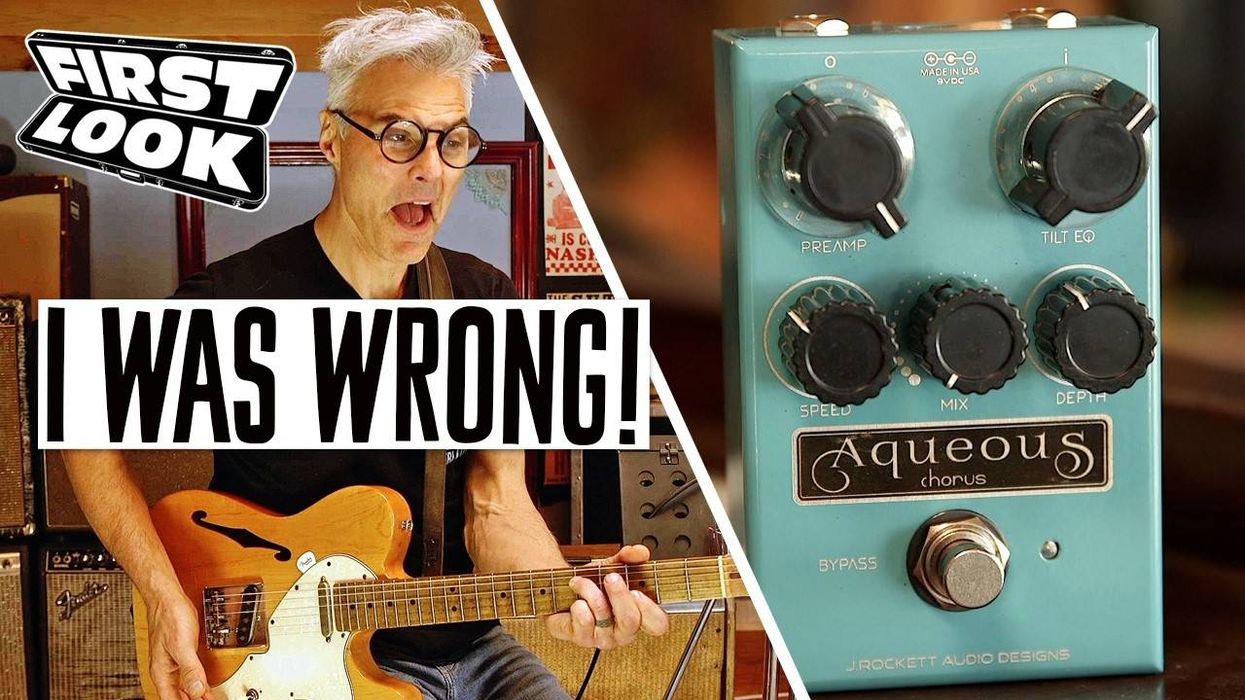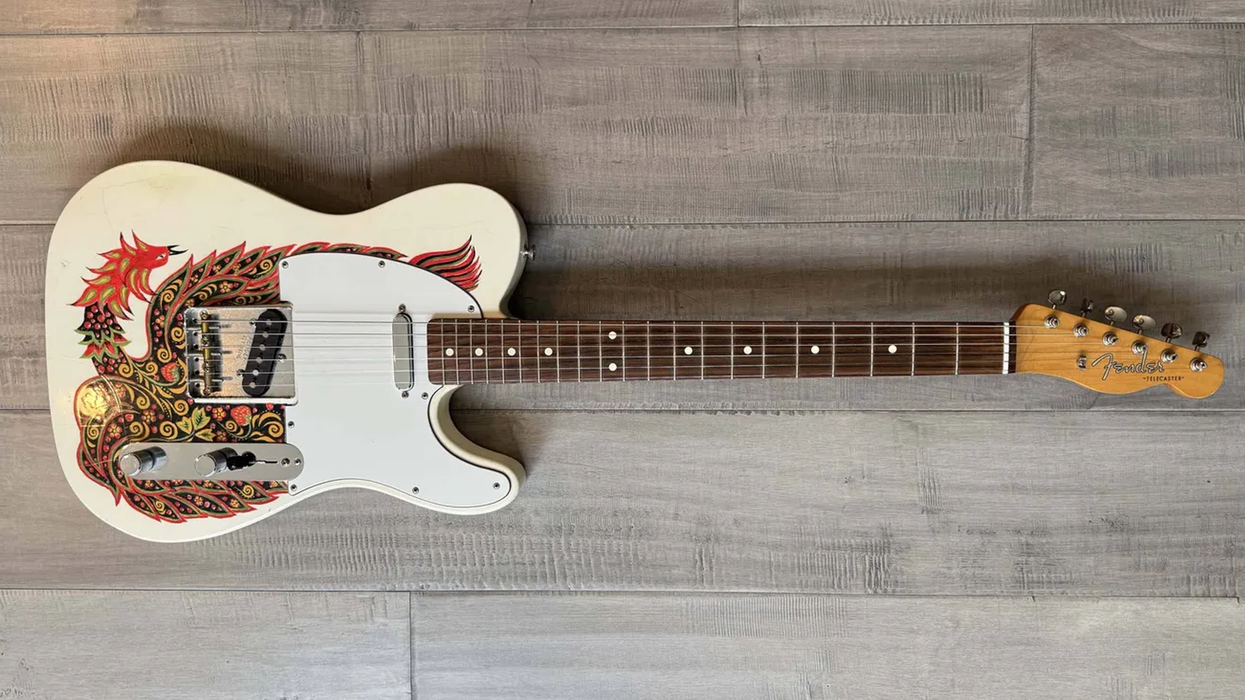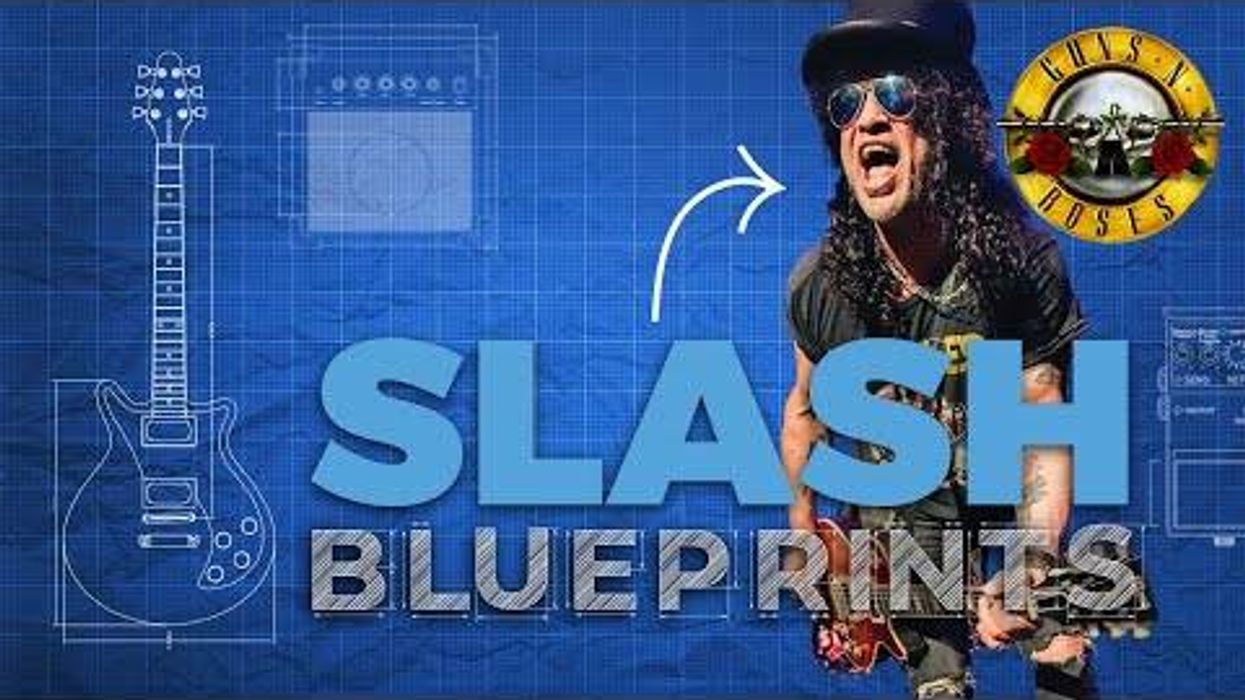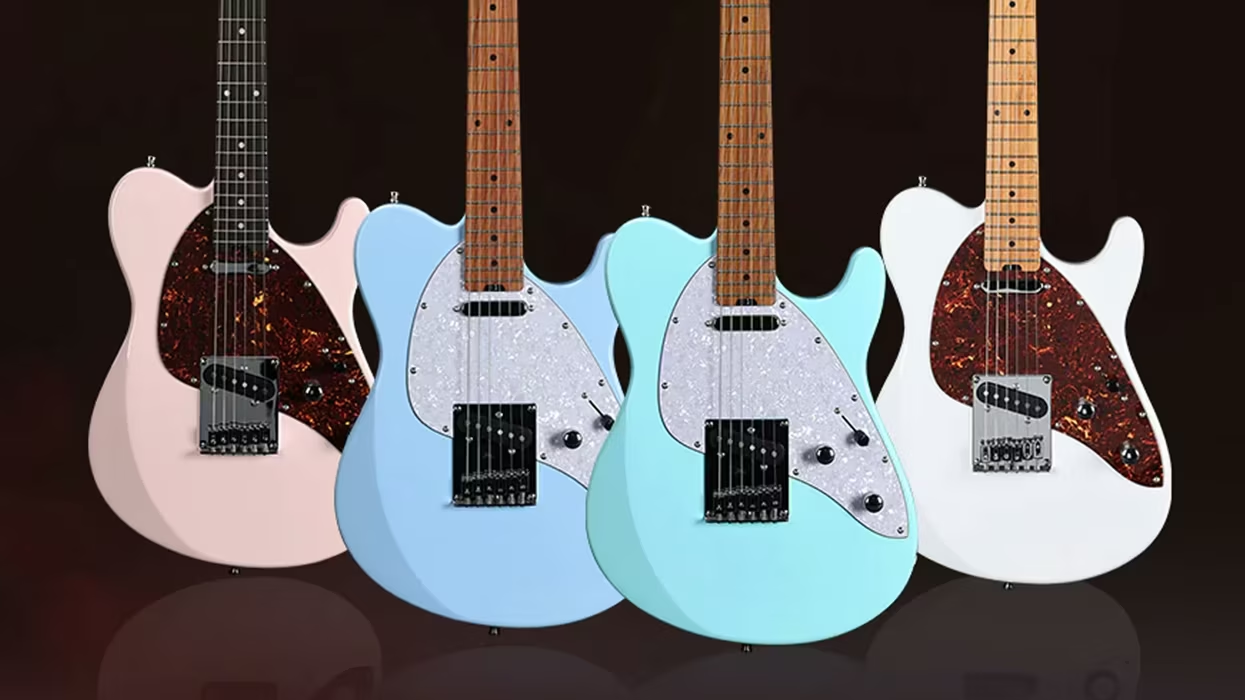Hang around guitars long enough, and you’ll encounter an oddball axe that remains forever burned in your memory. I’ll never forget the first time I came across a map-shaped National Newport. I was working in a guitar shop in the early ’90s, and there it was, hanging on the wall, sticking out like a sore thumb among the Fender- and Gibson-inspired electrics.
The body vaguely resembled a map of the United States. It was made out of a fiberglass that the company called “Res-O-Glass” and had knobs and switches that seemed to have been taken straight from an Edsel. It was priced under $500, and I should have bought it when I had the chance.
Original map guitars were made by Valco, who sold them through Montgomery Ward. These days they’re hard to come by, and if you find one, chances are that it will be hard to play or need a lot of work. So it’s cool to see Eastwood reissue Valco guitars under the resurrected Airline brand at very reasonable prices. Cooler still is the fact that Eastwood has updated the old Valco designs where they needed it, or created entirely new variations like the Map Baritone reviewed here.
Mean and Green
The Airline’s body and hardware tend to engender love-it or hate-it reactions, and I’m firmly in the former camp—especially when the guitar is a bright seafoam green with a vintage-correct pickup switch that looks lifted from a kitchen appliance.
a standard guitar.
But there’s more to the Map Baritone than its appearance. The guitar has a 27" scale, relatively short for a baritone, but it came strung with a set of D’Addarios gauged .013 to .062, offering plenty of string tension when tuned B-to-B (a fourth below standard tuning).
Beyond the fact that Valco never made a baritone guitar in this style, the guitar deviates from vintage in significant ways. Most notably, Eastwood eschewed fiberglass in favor of a chambered mahogany body. Rather than trying to source reproductions of the original Valco single-coils, the company chose a pair of Alnico Hot-10 humbuckers. They reduced the tone and volume control set from six knobs to three. Eastwood also opted for more stable hardware: a Tune-o-matic bridge with a stop tailpiece (a Bigsby-equipped version is also available) and chrome Wilkinson tuners that look exactly like Grovers.
The guitar’s craftsmanship is very good overall, save for a noticeable gap in the bolt-on neck’s pocket and slightly sharp fret ends (which may have been caused by changes in humidity, as the guitar was shipped to me in January).
Ratings
Pros:
Excellent baritone sound. Relatively easy to play. Killer looks.
Cons:
Slightly sharp fret-ends could use additional dressing.
Tones:
Playability:
Build/Design:
Value:
Street:
$779
Eastwood Guitars
Airline Map Baritone
eastwoodguitars.com
Takin’ a Ride, Slow and Low
Rather than simply bolting a longer neck to a standard Map body, Eastwood moved the bridge back, resulting a more conventional National-style neck/body joint at the 15th fret. (Vintage specimens have a 14th-fret neck joint.) Combined with the modest extension of scale length, this provides a feel not radically different from a standard guitar. The neck is shaped with a medium-depth C profile, and the 1 11/16" nut width feels comfortable despite the strings’ fatter gauges. While the guitar was set up with low action, it played virtually buzz-free in all positions, and its intonation was spot-on.
The resonance and volume generated by the chambered mahogany body impressed me before I’d plugged in to my Mesa/Boogie DC-5. And when I did plug in, the Airline was hard to put down. Electric baritones tend to be great for creating atmospheric tones and big soundscapes, and the Airline was no exception. Single-note lines are rich with sustain. Chords have a lush, deep, and overtone-rich quality—especially when employing open strings—that’s impossible to duplicate on a standard guitar.
The humbuckers and tone controls provide access to a wide palette of sounds. Rolling off the tone while using the neck pickup generates great bass guitar tones. (“Tic tac” lines doubling a standard bass sound especially good.) The bridge pickup is bright and mud-free, even with saturated tones. Working the two volume controls, I could generate cool in-between tones using shades from both pickups.
What’s lower than a baritone guitar? A baritone guitar in an alternate tuning! And the Airline is happy to go there. I got killer results by dropping it into the equivalent of open G tuning (ADADF#A, which is D tuning in baritone range) and grabbing a ceramic slide for dripping, Daniel Lanois-style bottleneck explorations.
The Verdict
The Airline Map Baritone probably won’t be anyone’s primary axe, but it’s an easily justified purchase given how much it does. I enjoy just looking at the thing, but it’s great fun to play, and if you haven’t explored the baritone range, you’ll soon discover how readily it inspires new musical ideas. The build quality has a pro vibe, and I wouldn’t hesitate to put the guitar to work on stage or in the studio. Eastwood has done a great thing by reviving this classic, if odd, design in baritone form.








![Rig Rundown: Russian Circles’ Mike Sullivan [2025]](https://www.premierguitar.com/media-library/youtube.jpg?id=62303631&width=1245&height=700&quality=70&coordinates=0%2C0%2C0%2C0)

















